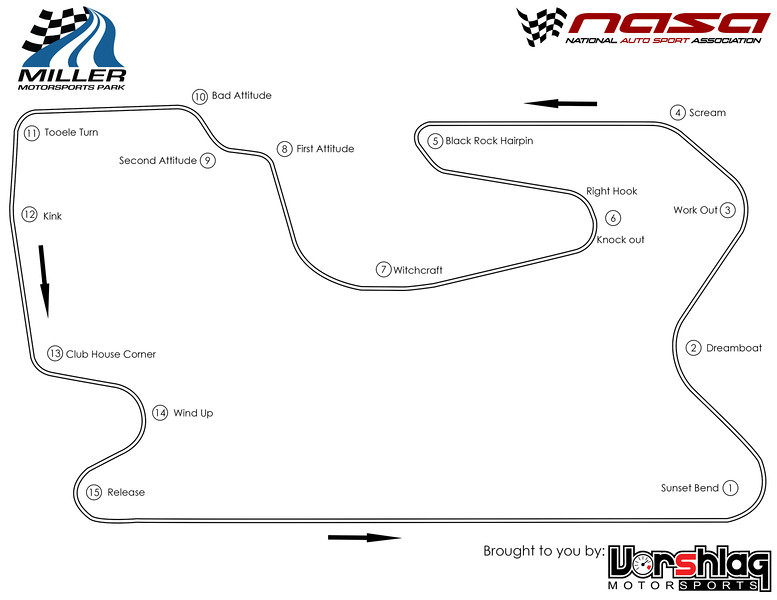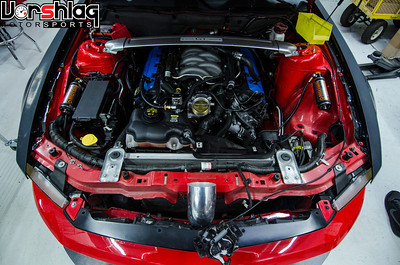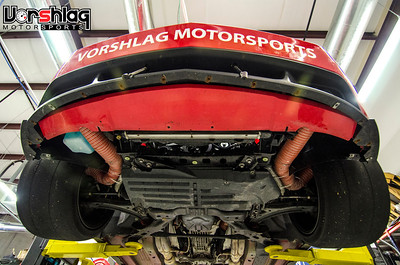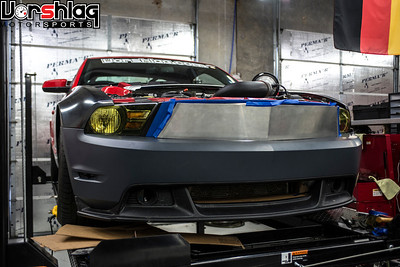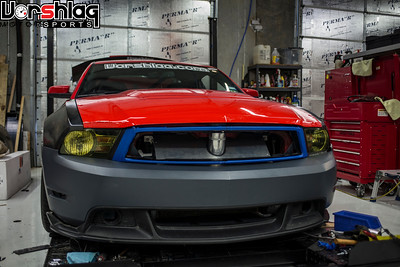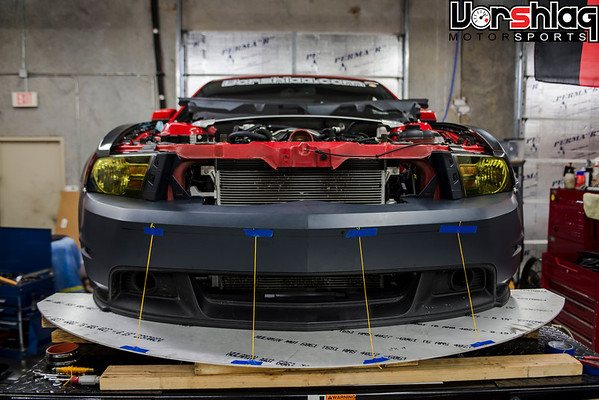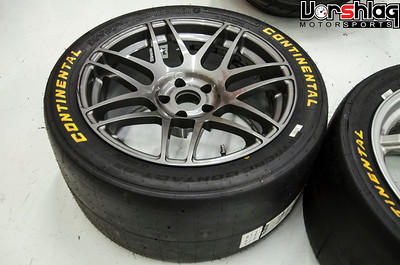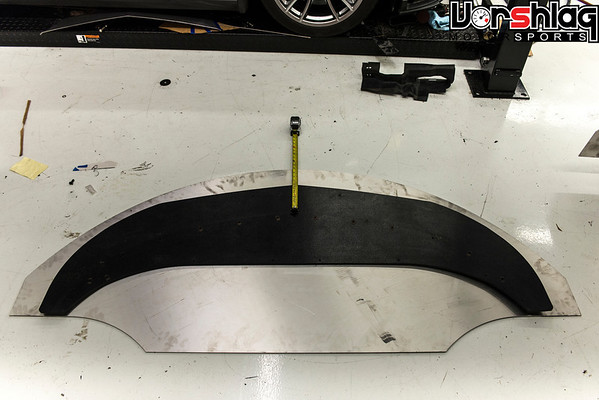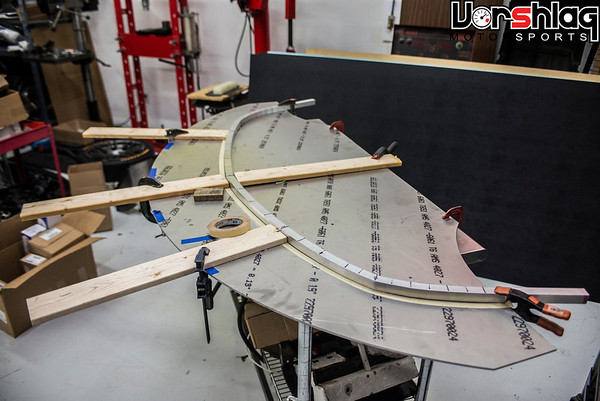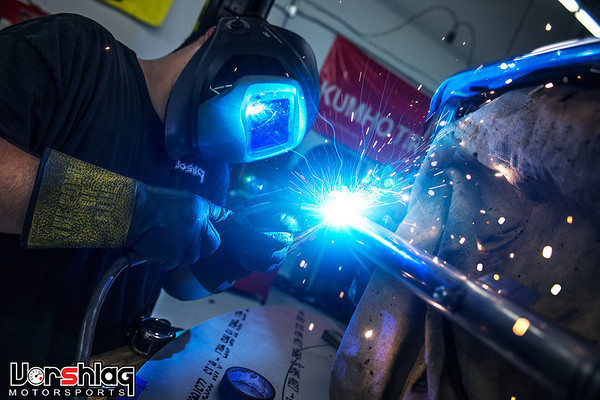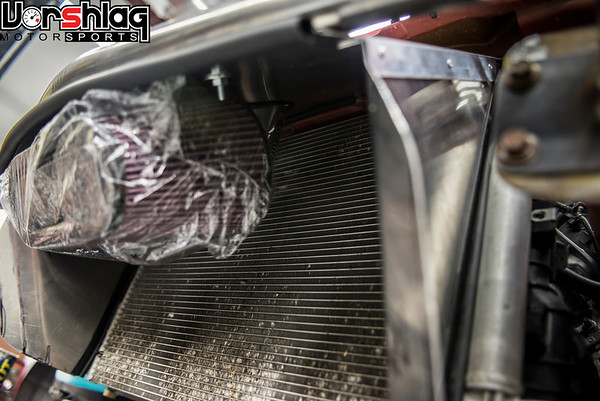Project Update for August 14th, 2013: I am still playing catch up on the event coverage in an "STU prepped" 2012 Mustang GT I co-drove in July, some changes in SCCA classing that affect the S197 (both good and bad), and some major aero work on our 2011 Mustang GT that we are attempting before NASA Nationals in a few weeks. Let's get to it.
Since the bulk of this post has to do with a test we did in an STU prepared Mustang, I will give some background on the many SCCA autocross classes that an S197 Mustang can be raced in, with my personal views on each. I've raced in every single one of these classes at some point in the past 25 years, and many of those times were in an SN95, Fox body, or S197 Mustang. Or a Camaro, Subaru, BMW or EVO.
SCCA Solo Classing - Many Choices, None of Them Great
I have been fairly vocal about my disdain for some of the rules and rules makers in SCCA Solo (autocrossing), but it is still the biggest club doing these lower speed events in the country and it cannot be ignored. Many other clubs just adopt the SCCA rules, letter and verse, so this big book of rules is the one most people go by (346 pages in the
2013 Solo Rule Book, plus
another 28 pages for supplemental event regulations and tire clarifications). Honestly I try to get S197 racers to
NOT build around SCCA rules, as it will likely only cause you frustration and pain, but if your goal is to become a competitive autocrosser and nothing else, then this is the series to build around. If you are a casual autocrosser, just know the basics below, build what you want, and "run what ya brung" at local events in the class that is the closest to your car.
Let's examine the basics of each of the optional SCCA Solo classes for the S197 Mustang:
F Stock - Aftermarket shocks are allowed (up to custom double adjustables with remote reservoirs), aftermarket front
OR rear sway bar, R compound tires (which goes away in 2014 with Street class), but stock sized wheels, stock springs, and very few cars can have any additional camber adjustment (and virtually all stock cars need it). If you don't have a 2007-08 Shelby GT (which is essentially an "ESP-Lite" car from Shelby/Ford), then you're wallowing around on stock spring rates, super tall ride heights, and hating life.


I really dislike the Stock category due to the excruciating restrictions in some areas, yet wide open rules for tires and shocks (which can really drive up costs), and calling it the "entry level" autocross class is a bit of a misnomer. The super sticky tires needed at the top levels to compete puts the costs of this "entry level" class far out of the reach of the average autocrosser, and the restrictions on modifications keep just about every car's suspension tuned so poorly that they handle for crap AND eat tires too rapidly. There were a lot of good, proposed changes to fix this category for 2014 (camber addition, banning crazy custom shocks, sway bars open, 200 TW street tires, +/-1" of wheel diameter), but the rules makers backed down and in the end only really got one change through - the switch to 140 treadwear street tires for next year. It is still going to be a painful class for the typical (non-Shelby GT) Mustang S197. It will still have too much pitch, roll and brake dive and it will handle like the images shown above.
Street Touring (STX -> STU) - For most of the ST category's existence, the S197 5.0L cars were able to run in
either STX (on a max 265mm street tire and 9" wheel)
or STU (on a max 285mm tire, unlimited wheel width). In 2012, they locked this car into STX which I felt was a slight mistake. We raced our 2011 GT in STX for two painful years, where it sucked badly, then stepped up to a 275mm tire on a wider wheel and ran in STU twice. The handling and fun was a lot better for such a modest increase in tire size. Suspension options are
mostly unlimited shock, spring, camber, and (non-metal) bushing choices, with some out of date rear suspension restrictions. Motor has to stay stock from throttle body to exhaust port, with headers, full exhaust (with catalytic converters) and a cold air intake being open.
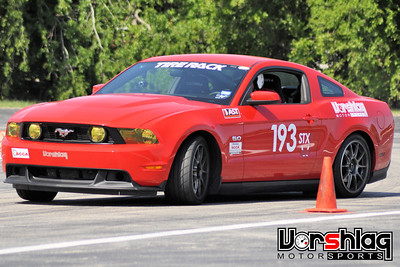

You can tune the engine (EFI) to your heart's content, which essentially allows for unlimited boost on factory turbo cars (there is no policing of boost controls - nor any scheme to ever do this). We pushed hard to start a letter writing campaign in early 2013 to get the V8 S197 Mustang moved to STU, and it seems to have worked. Supposedly this is going to happen starting 1/1/2014 (or 2015 depending on how you read the confusing rules update). Will this car do any better in STU relative to STX? Probably not a WHOLE lot better, but the added tire is badly needed on these heavy, powerful cars - we tested this theory in the event described below. Even as uncompetitive as it seems on paper, I feel STU is the class that 90% of the casual Mustang autocrossers would end up in.
E Street Prepared - If you've been reading this build thread for a while you know that we left STX/STU and went to ESP in our 2011 GT in late 2012. We had limited success there (4th at Nationals), due to a lack of testing time, excessive weight of our car relative to the top ESP car (a hybrid Firebird build of a drivetrain/chassis combination only allowed in this class), and some other mods we had not explored yet. This class allows the same weirdly restrictive yet expensive suspension mods as Street Touring, plus unlimited wheel and tire width, and super sticky R compound tires (with treadwear ratings approaching 0 and slick tread, yet still "DOT" certified). Again, some weird aero mods are allowed (circa 1960), plus unlimited intake manifold, no emissions regulations, some obscure amounts of port matching, unlimited EFI, and unlimited boost (which is explicitly allowed in this category).


This is still a "good" class to build for, if you can stomach the tire bills, and with enough time/money/testing a fully built S197 could win this class. An expensive tire budget is a key issue. The Hoosier A6s start to fall off after about 20 runs (usually 60 sec in length), and are probably corded after 40-60 runs. If you want anything more than local competitiveness, you will be building a purpose built race car, sans A/C, radio, emissions, and more. But it will still have the stock camshaft, heads, internal engine parts, and the funky rear suspension issues are likely to be in-curable without extraordinary measures.
Street Mod - This class takes Street Prepared rules, then adds a good bit more. Cars in this class must have four seats (from the factory) so that puts your Mustang up against a lot of AWD turbo cars, lighter BMWs and several other four seat RWD cars.


Winning SM in an S197 can happen locally (we've done that a few times), but at the National level you will be hard pressed to get the car down to minimum weight and still be fast enough to beat the other cars here. Still, the relatively unrestricted nature of the rules - unlimited engine mods, metal bushings allowed everywhere, big wings and splitters - will attract a limited few S197 folks to this category.
So those are the main SCCA Solo classes for the S197 Mustang. You could also build for C Prepared or E Modified in an S197, but those two classes are ruled by completely gutted race car shells running on giant non-DOT slicks. And both classes have their own set of open yet restrictive rules that will make you want to pull your hair out. Just... don't even think about those two options. Of all of the above choices, I feel the only two worth exploring in an S197 are STU and ESP, with STU being the much more common choice, as you have to run on 140+ treadwear street tires and keep emissions equipment. This saves you a lot of money and keeps your car a dual purpose street/autocross car.
Since we started the STU letter writing campaign, personally raced an S197 in STX for over two years, and raced an S197 in STU when it was allowed before 2012, I wanted to see how one of these cars would stack up at a local SCCA event in STU once again. So less than two weeks after the
August 2013 FasTrack announced the S197 move back to STU (effective in 2014, we
think), I found a Coyote equipped Mustang with a lot of the standard STU mods to co-drive and we ran it in this new class.
SCCA Autocross, concrete lot at Dallas Raceway, July 28, 2013
Mark Council is a Vorshlag customer and tester and has been building his 2012 Mustang GT around the ESP class in SCCA autocrossing. Mark said before that he would prefer to race on street tires, if this chassis was moved to STU class in the Street Touring category. So after the August 2013 FasTrack announcement, he offered me a co-drive, we found a Texas Region SCCA event on concrete, and away we went.
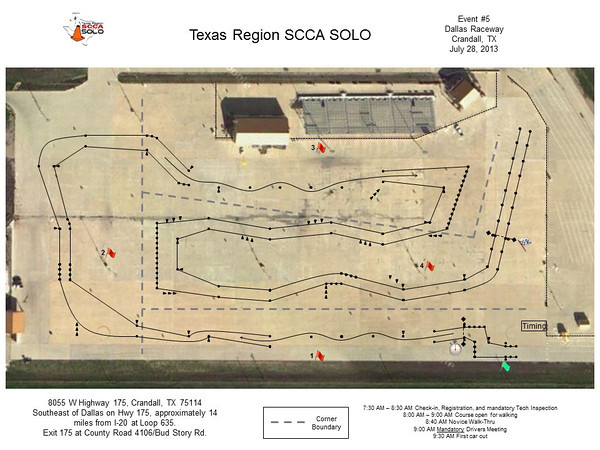
Mods to Mark's 2012 GT include: AST 4150 coilovers, 550#/in front and 250 #/in rear springs, Vorshlag camber plates, lots of negative camber, 18x10" Vorshlag/D-Force wheels, 285/35/18 Hankook R-S3 tires, Torsen T-2R differential, reprogrammed rev limit (7000 rpm), factory 3.55 gears, MGW shifter, mufflers, Whiteline sway bars front and rear, optional CS lower fascia, optional Brembo brakes with Vorshlag SS brake lines and Carbotech AX6 brake pads. He has more planned, but that's what it had installed when we raced it. Not a bad combination at all and it's 100% streetable and emissions legal. And most important of all, it's STU legal.

In order to avoid running both drivers in the same heat on this VERY hot Texas summer day, we split up into two available run groups. Two drivers running the same car in one heat would have overheated the tires quickly, plus made it more difficult to "reset the car" between runs. I've done it many times at local events and it always becomes a major time crunch - bleeding air pressure, cooling the tires and engine, checking tire temperatures, changing numbers, resetting cameras and more. So I ran in the 1st heat in the "X" class, with my first runs at 77°F ambient and my last runs in the high 80s. This is an optional class in our region to allow the National level drivers (or anyone who chooses) to compete together in this class, running with a PAX factor. It keeps the regular classes from always being dominated by the National level folks. I had no illusions that I would win X-class, as the PAX factor for STU almost exactly matches ESP's, even with STU having a lot more restrictions and running on street tires. I just wanted to break up our runs into two heats, but still wanted to see how the car stacked up in this PAX class.
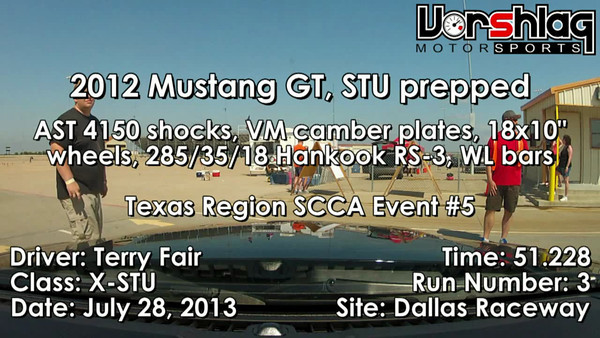 Click above to watch Terry's third and fastest run in STU-X. You can stream up to 720P rez
Click above to watch Terry's third and fastest run in STU-X. You can stream up to 720P rez
Mark ran in the actual STU "open" class during the 4th and final heat of the day, which was also the hottest part of the day (97°F). The course was dirty in the first heat and cleaned up for later heats, but the added ambient temperature took some of the "clean" advantage away, at least on street tires. We figured we would analyze his runs against the four STU cars and my runs against the X-class "pro" drivers and both against overall PAX results. I got 29th out of 136 in PAX, which is much lower than I have done at these Texas Region events lately in our 2011 Mustang in ESP or even StreetMod. But before you guys over-analyze the PAX results, comparing this car's runs by me (running in X-class in 1st heat) or Mark (running STU in 4th heat) to other classes/heats, know this:
There was a course change after the first heat. The first heat had the following classes: AM, BM, CM, CS, GS, DM, EP, FP, FSP, GP, STF, X. The Safety Stewards demanded a change to the finish, but not until after the entire first heat had made their five runs.
 Terry driving during his fifth run with Mark riding shotgun. Pretty cool video with
Terry driving during his fifth run with Mark riding shotgun. Pretty cool video with
three camera views . Almost as quick as his solo third run. Up to 1080P rez
Again, splitting up and running in two different heats was a choice we made due to the hot conditions and relatively short heats. We knew that if both of us ran in the same heat at the very end of the day (97°F by day's end), that the tires would overheat badly. As it was, we still sprayed tires after EVERY run in the morning (for me) and TWICE after each afternoon run for Mark. The rear tires got HOT HOT HOT. I even had some trouble with the brakes hitting a bit of ICE MODE on the ABS as well. Again, the course was much dirtier when I ran in 1st heat, and Mark had no such complaints.

 Left: Splitting up our runs into two heats allowed Mark (L) and me (R) to help each other between runs. Right: Jason McCall's BSP Corvette.
Left: Splitting up our runs into two heats allowed Mark (L) and me (R) to help each other between runs. Right: Jason McCall's BSP Corvette.
The mid-event course change essentially throws away the comparison data for runs that were not made in the same course configuration (1st heat vs 2nd/3rd/4th heats). During the morning course walk I predicted the finish would be too fast and that the curve right before the lights would create lots of spins and prompt a course change after the first few runs. Instead of making the change early and re-running the first few cars, they made the unusual decision to change it after an entire heat ran. Ironically the course fix didn't make the course that much safer - as there were almost as many spins in the finish after "the fix" as before.
continued below

























